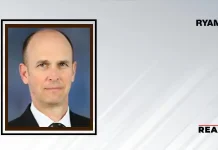Howard Payne University’s (HPU )Dr. Martin Mintchev and students from his engineering science senior project course aim to feed the world using micro-animal farming. Their design, provisionally called Microfiest, attempts to grow microscopic animals known as tardigrades as rapidly procreating cellulose-to-protein converters. Once the contained environment is converted from being dominated by cellulose to being dominated by tardigrades, it will be dried and milled into protein-rich flour.
Also Read: The Welfare of Water Use in Sub-Saharan African Communities
These micro-animals can survive tremendously varied and even very difficult environmental conditions and, if properly farmed, multiply rapidly,” said Dr. Mintchev, professor of engineering(HPU ) and chair of the Department of Engineering. “Because they consume cellulose while growing protein in the process, and due to their extremely high reproducibility, they can be considered an extremely rapid cellulose-to-protein converter and a potentially reliable food source.”
Dr. Mintchev devised the micro-animal farming project not only as an educational opportunity for his students in engineering design and entrepreneurship but also as a humanitarian task for motivating them to become part of a possible solution of one of the world’s most pressing problems – hunger.
“If we learn how to farm micro-animals in huge quantities by feeding them with cellulose that is indigestible for humans, the resulting protein might deliver valuable and much needed nutrition,” he explained. “Interestingly, tardigrades have the ability to preserve themselves in a dormant state even if light, water and cellulose become unavailable, without any need for refrigeration or special conditions, which creates the possibility of long-term simple storage without any energy or special facilities required.”
The fully functional tardigrade farm is, for now, a glass container full of algae, moss, water, light and an initial population of approximately 120 tardigrades supplied by the Carolina Biological Supply Company of Burlington, North Carolina. These tardigrades live, grow and procreate under a caging nanomesh lid provided by CB Tech Inc., of Las Vegas, Nevada. The team will monitor the population dynamics and plans to eventually optimize the living conditions of the micro-animals to maximize their growth and number




